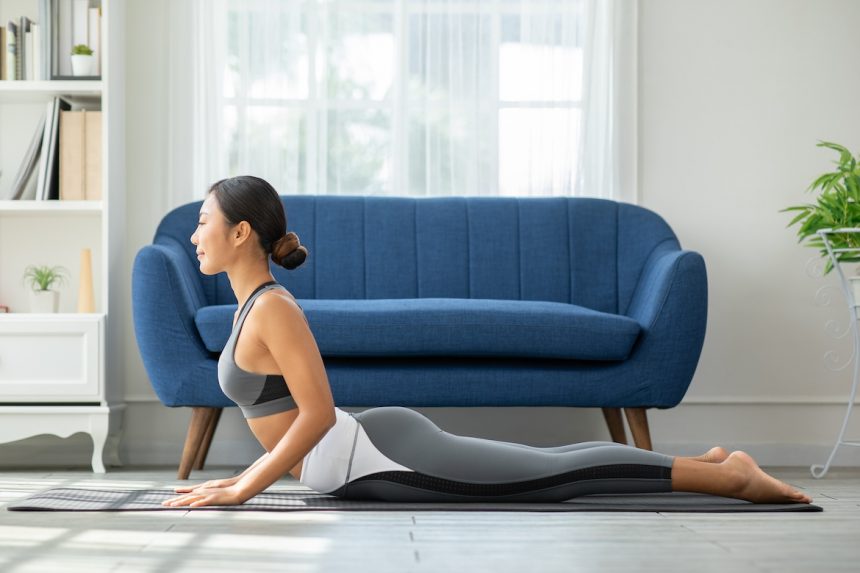Many of us have a yoga pose that we actively avoid or dread because it feels challenging or even painful to do. One such pose could be Cobra pose (Bhujangasana in Sanskrit). If you’ve never been taught the proper technique or have only done it quickly in a sequence, it can feel elusive. However, mastering Cobra pose is worth the effort as it is a great way to stretch and strengthen the muscles in your front body and around your spine.
Here are four common reasons why Cobra pose might feel inaccessible, along with some pose troubleshooting tips to help you finally enjoy the pose and embrace your inner snake.
1. Lack of spinal mobility
If you struggle to lift your upper body off the mat or create a curve in your spine, it could be due to lack of flexibility in your lower and middle back. Tight and weak back muscles can also contribute to this issue. To improve your spinal mobility, try incorporating Cat-Cow pose and Low Cobra pose with hands hovering into your practice.
2. Not using your hands and arms effectively
Misalignments such as splayed out elbows and raised shoulders can make Cobra pose uncomfortable. Ensure your hands are beneath your shoulders, hug your elbows in, and press your hands down to properly align your arms, shoulders, and shoulder blades. You can also try the hand bind technique to engage larger muscles in your arms and shoulders.
3. Lack of support for your lower back
If you experience lower back pain during Cobra pose, it could be due to poor spinal alignment or positioning of your legs. To provide support for your lower back, make sure to draw your chest forward before arching your back, engage your core muscles, and keep your legs hip-width apart.
Remember to listen to your body and adjust the pose as needed to avoid pain or discomfort. With practice and attention to alignment, Cobra pose can become a more enjoyable and beneficial part of your yoga practice.






